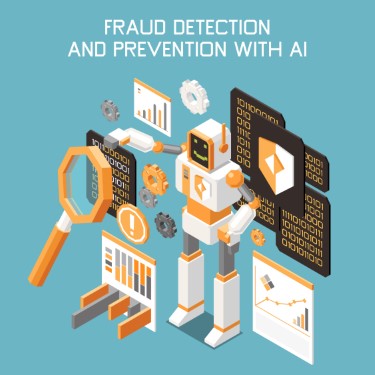
Managing and Evaluating the Security of AI
Security of AI Systems: Directions in Hacking Prevention
The development and use of Artificial Intelligence (AI) systems have rapidly increased over the past few years, whether in the private or public sector, with applications in various fields such as organizational problem-solving, medical technology development, and the deployment of automated systems in both research and business. AI, therefore, is an efficient and highly beneficial system, but it also comes with increased associated security risks. Hence, preventing hacking in AI systems is crucial.

Security Issues Related to AI
Adversarial Attacks: Researchers have found that AI systems can be manipulated to make errors by adding unrelated elements or modifying images and other data slightly, which can be used for attacks that humans may not be able to detect.
Note:
Adversarial attacks on AI are techniques used by attackers to deceive AI into making errors or producing incorrect results using various methods such as:
Data Poisoning: Attackers may plan to poison the data used to train AI models to make them work incorrectly or unusable. This attack is called Data Poisoning, which can be an attack on the Availability of the model (making the model unusable) or the Integrity of the model (creating a Backdoor in the system).
Generative Adversarial Networks (GAN): GAN is a technique that uses two models - a generator and a discriminator - to develop AI. GAN can be used for attacks or to create malware that avoids detection.
- Algorithmic Manipulation: Manipulating AI to make incorrect decisions. This type of attack can lead to results deviating from what they should be.
- Inappropriate Usage: Creating and using AI systems without proper security checks and testing may create vulnerabilities that pose a high risk of attack and data access that could be dangerous.
- Lack of Transparency: In some cases, the use of AI systems may involve opaque and insufficiently monitored operations, which may pose risks to security and data reliability.

Preventing Hacking in AI Systems
Developing Secure by Design (SbD) is a method that prioritizes security from the design stage with the goal of creating robustly secure systems. Its principles include:
- Economy of Mechanism: Designing systems to be as simple and minimal as possible to reduce complexity and potential vulnerabilities.
- Fail-Safe Defaults: Setting secure defaults without requiring additional customization.
- Complete Mediation: Checking access rights every time to eliminate control vulnerabilities.
- Least Privilege: Granting access rights only necessary for required operations and not more than necessary.
- Defense in Depth: Employing multiple layers of defense to reduce attack risks and increase system or structure reliability. This is crucial for preventing intrusions and security breaches.
- Open Design: Designing systems or programs that disclose information and structure to the public without retaining secrecy. This is vital for building user trust and transparency.
- Separation of Privilege: Separating access rights for each part of the system.
- Least Common Mechanism: Minimizing shared channels.
- Psychological Acceptability: Designing for understanding and ease of use.
Developing Secure by Design helps ensure system security from the start and is crucial in preventing attacks and security breaches.
Using Automated Inspection Technologies: Utilizing automated inspection technologies such as code review and system testing can help reduce the risk of AI system vulnerabilities.
Creating and Using Secure Data: Employing encryption technology and strong authentication systems (2-factor authentication) to prevent unauthorized data access.
Training Staff and Users: Training staff and users to understand the importance of security and methods for preventing attacks.
Examples of Hacking Prevention in AI Systems
Preventing hacking in AI systems is crucial in both development and usage. Implementing security measures at every stage of the process helps reduce the risk of attacks and valuable data loss, ensuring that AI systems can operate securely and efficiently.
- Layered Defense: Employing a layered defense approach is an effective mechanism for preventing hacking in AI systems. Utilizing multiple layers of security measures helps reduce the risk of attacks. For example, using Firewall systems and Intrusion Detection Systems (IDS) to detect and prevent unauthorized access, along with implementing Basic Authentication to grant system access only to authorized users.
- Developing and Using Transparent AI Systems: Developing transparent AI systems facilitates easier monitoring and tracking of usage. This enables quick detection and correction of inappropriate data access or system usage. For instance, leveraging Blockchain technology is vital in the digital world for securely storing data and online transactions transparently. Blockchain records data in blocks, with each block containing transaction information and links to previous blocks, making data modification or deletion difficult.
Utilizing appropriate and effective technologies and hacking prevention measures helps ensure the security and trustworthiness of AI systems. Additionally, regular system updates and reviews for hacking prevention should be ongoing activities to maintain continuous system security and trustworthiness.

Methods and Skills Related to Risk Prevention in AI Systems
- Understanding the Technical Aspects of AI Systems: Having knowledge about how AI systems work and the technologies they use, such as Deep Learning and Computer Vision, is crucial for identifying and being aware of associated risks.
- Understanding Adversarial Attacks: Being aware of adversarial attack methods and related risks can aid in developing tools and technologies for detecting and preventing such attacks.
- Data Analysis Skills: The ability to analyze and scrutinize data systematically is essential for detecting and identifying abnormalities or risks that may occur in AI systems.
- Testing and System Verification Skills: Skills in creating and conducting tests on AI systems to identify vulnerabilities and potential issues, including penetration testing to assess risks.
- Secure by Design Development Skills: Understanding the principles of developing secure systems from the initial design stages and utilizing tools and technologies to create secure AI systems.
- Risk Assessment Skills: The ability to assess risks associated with AI systems and systematically check for risks to plan risk prevention measures.
- Communication and Explanation Skills: Clear communication and explanation about risks and prevention measures to relevant stakeholders, such as development teams, managers, and users.
- Continuous Training and Skill Development: Continuous training and development of new skills related to security and risk prevention in AI systems to improve and prevent risks in the long term.
Preparing skills and awareness of risks associated with AI systems is crucial for system developers and administrators to prevent risks and maintain the trust and long-term security of AI systems in operation.
Refer : https://www.sonarsource.com/ , https://medium.com/
--------------------------------------------------------------------------------------------------------------------------------
Those interested in receiving business information and consultation services can contact the DIPROM Business Service Center under the Department of Industrial Promotion, which operates within the Information Technology and Communication Center for Industry Promotion.
Telephone: 02-430-6879 ext. 1702
Call Center: 1358, press 0
Counter: 64
Articles About this
Using AI to Solve Societal Problems
The concept of using artificial intelligence (AI) to address societal issues is entering a new era of development. It's not just about increasing efficiency in tasks but also about opening up significant opportunities for sustainable development in both private and governmental sectors worldwide
Innovation Process: Creating towards Success
The Innovation Process is crucial for the development and growth of an organization, amidst societal and technological changes that drive leaps forward. It enables organizations to lead in the market and gain a competitive edge. This article will explain the innovation process from inception to actual product or service delivery, focusing on step-by-step explanations and deep examples to enhance understanding and provide additional knowledge about the innovation process.
Business Innovation
Innovation is crucial for businesses in today's era, as technological advancements and economic changes require continuous adaptation and development for survival in competitive and challenging markets. This article will analyze business innovation, focusing on creating innovation within organizations, applying it in business contexts, and analyzing metrics for the success of business innovation.


